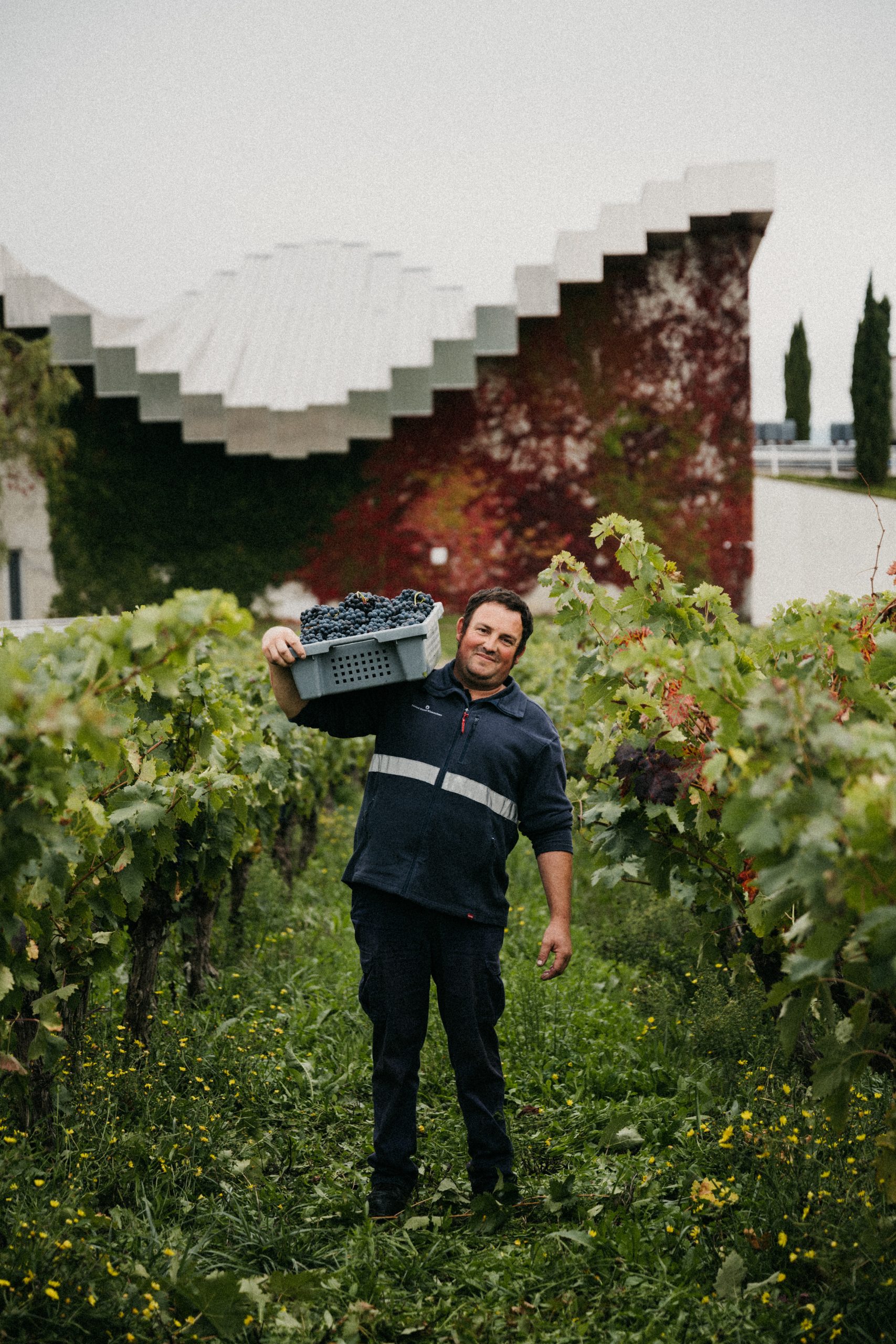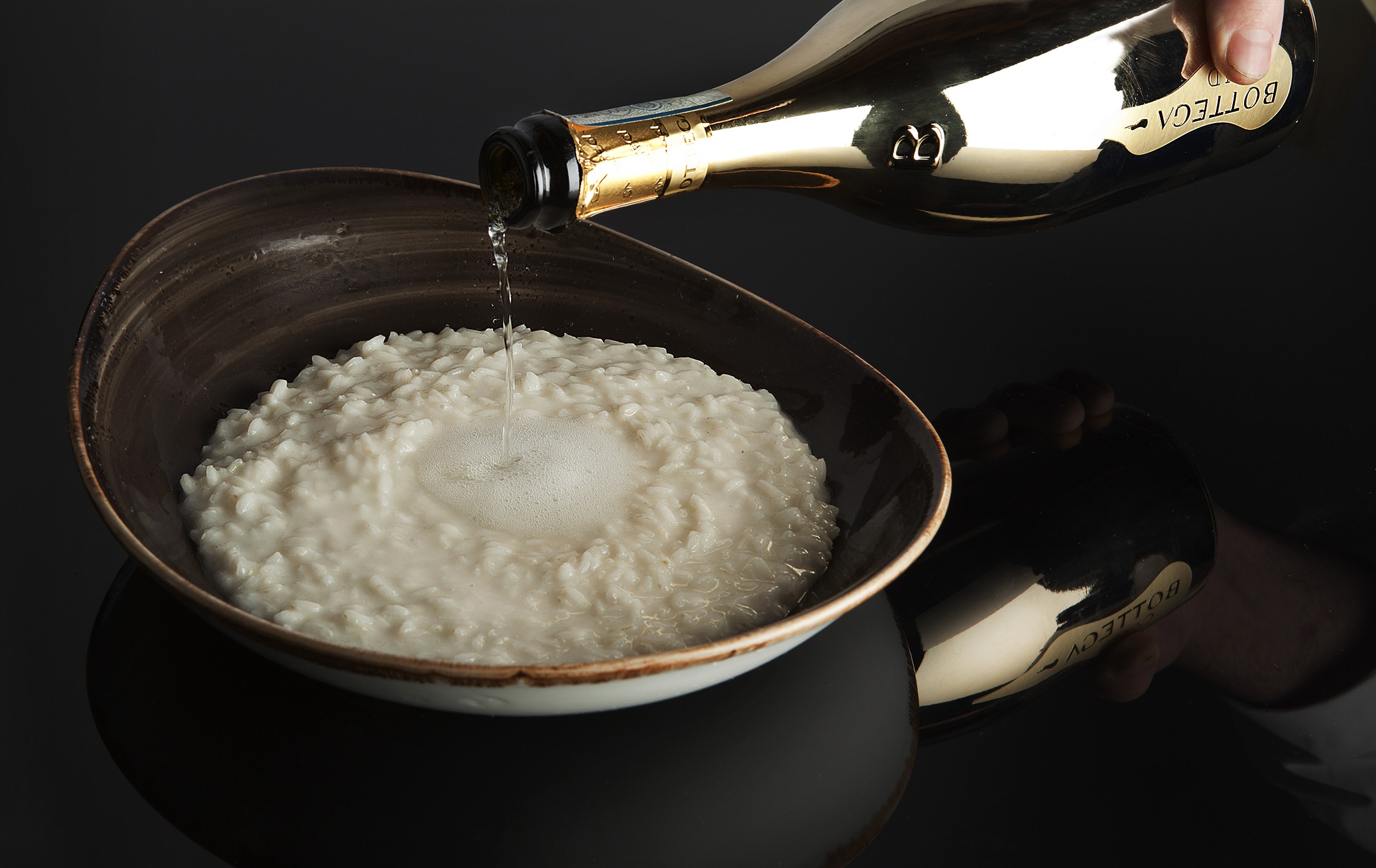Fidel Gastro
“standfirst”>Tom Etridge is revolutionising gastropubs, dragging them nineties into the noughties. In his plans, they’re no longer and they’re certainly not cheap, says Patrick Schmitt
PERHAPS IT’S a sign of just how trendy Bordeaux has become that Tom Etridge, the man behind some of Britain’s coolest pubs, is so fond of it. With his blue shades hanging from a very open-neck shirt, his pin-striped jacket and designer jeans, Etridge is no stereotypical claret quaffer. On the other hand, he’s also no obvious fly-fisher, or keen golfer, and it appears that first impressions, formed quickly due to his slick appearance and confident manner, only give way to a series of surprises. Bordeaux hasn’t become hip, it’s just that Etridge is actually quite conventional.
His working background, too, is perhaps surprising. He didn’t begin in the fiery confines of the kitchen but rather in marketing and advertising, first at a design consultancy called Fitch and then Saatchi and Saatchi.
This start to his career explains much about both Etridge’s own carefully concocted appearance and that of his gastropubs – both have a modern but restrained look, the sort that hints at a trained eye, the vision of someone who’s worked in the world of creative marketing. However, and this is also a sign of design experience, to the casual onlooker the overall effect appears far from studied.
But although the background in design and advertising has no doubt proved useful to Etridge’s operations, it doesn’t explain why he entered the world of pubs. It turns out much later in a reasonably rushed discussion with Etridge – he’s a busy man – that his mother used to run a restaurant, he’s always loved food, and his career with Saatchi was interrupted by not one but two bouts of Salmonella, enough to leave him plenty of time to think, and eventually plan his first gastropub, Golborne House. It’s also worth noting that restaurant critic Fay Maschler’s sister, Beth Coventry, was an important factor, being Etridge’s original investor.
So, some six years ago, back in August 1999, Etridge, up from his sick-bed, together with Coventry, started Golborne House, right at the north end of Portobello Road in Notting Hill. “We’d found a good site and got a good deal,” Etridge explains, while later admitting that the pub was “in the middle of a huge council estate”. Nevertheless, Etridge and Coventry quickly created “a gastropub in the classic 90s style – we had secondhand furniture, a small open kitchen and an eclectic style to the interior”.
Canalside capers
The success of this first venture prompted Etridge to search for a second site. He found the Waterway, another pub in a far from salubrious spot, although this time in Maida Vale. As Etridge points out, “It was an old council estate boozer, but when you’re starting off, these are the only things you can get your hands on – dodgy sites in dodgy areas.”
However, with the Waterway Etridge “had this fantastic location on the canal with a big south-facing licensed area outside. I just knocked out one of the walls and created this big terrace and laid loads of decking over it. It’s got about a100-seat covered decking area which holds 200 or 300 people on a sunny day.”
Such was the popularity of this second gastropub that Etridge had enough money “to do some more”, as he puts it. “So I did the Wells up in Hampstead [with Coventry] and then I did The Ebury after that, which has been open about 18 months now. Then I did The Farm.” Etridge also has The Running Horse in Mayfair, “but because it’s a different style I keep it slightly separate”, he explains.
He and Coventry have since sold Golborne House, and Etridge sold his share in The Wells to Coventry, who now owns it outright. This left Etridge with four sites; The Waterway, The Running Horse, The Ebury and The Farm.
But is there a house style, a brand “Etridge”? And does he want the customer to recognise it? “What I try and do is set each site up with a view to doing an individual, local, neighbourhood gastropub. I deliberately try not to do anything that’s an identical format, just simply because I don’t believe that approach works in pubs and restaurants. So the design is different, the chefs do their own menus – there is no head office control on the style of food – and they are basically stand-alone units.
Partner Content
“Obviously,” he adds, “it’s beneficial for people to be aware they get the same standard of products and same type of style of place, and people who are interested or vaguely observant will notice the logo [for each gastropub] has the outline of the building in it, while the website has all the bits and pieces on. And the press talk about it [the fact Etridge is behind the pubs]. It’s not about trying to put a chain of places together but it’s not about trying to hide that they are all owned by the same person.”
Etridge’s particular style of operation is that, increasingly, it is far removed from the stereotypical image of a gastropub. His hallmarks are modern and slick interiors, innovative food, extensive wine lists, not dusty floorboards, mismatched furniture and hearty grub with a handful of wines to match, usually listed on a blackboard.
“I think gastropubs are going to have to evolve over the next few years,” he says. “There are too many out there that are the old 90s style, that are eclectic with simple furniture and food. The days of being able to do that were in the 90s when it was very easy because there were very few decent pubs around. Nowadays people are starting to develop a slightly more interesting concept to make their mark.”
And for Etridge, “Any site has potential; it needn’t be a pub. I started off through a pub because of the Beers Orders legislation in 1988.” This government act, which aimed to increase competition in the pub industry by reducing “tied trade” – beer sold through brewers’ own pubs – and encouraging “free trade”, created a glut of “massively undervalued freehold properties across the country as brewers were gradually being asked to sell off their sites”. This made it “quite easy for the first Eaglestyle gastropublicans to go in there, put in an open kitchen, do something really pretty simple which seemed like it was absolutely fantastic but it was basically nigh-on restaurant standard food, a lot cheaper and in a lot more relaxed atmosphere. People could just walk in, pick up, eat, and it was everything you wanted out of a pub.”
So what’s changed for Etridge at least? “If you went back 15 years and asked the average customer in the street what he knew about food or what he knew about restaurants and you asked them today you’d probably find people are much better educated about food generally.” This increased consumer awareness of food and drink Etridge ascribes, in particular, to celebrity cooks. “I mean, how often is Gordon Ramsay on the TV?” he asks. “Only 15 years ago they were just hard-working chefs sweating blood for their money.” As a result, says Etridge, “Customers are much better educated in regard to what goes on in restaurants, and operators have had to improve their standards, and pubs are just one element of that.”
So what about prices? The likes of an Etridge gastropub is certainly as expensive as a middle- to upper-ranking restaurant. “We are absolutely as expensive as a restaurant,” says Etridge, “and if you look at one of our menus it is probably the type of food you’d find in a brasserie style restaurant.” And for Etridge, although “there have been a lot of places that have got away with charging a reasonable amount for something that is quite simple”, the key to gastropubs is that they offer “a simpler format” but not necessarily simpler food. “It’s the atmosphere that makes it feel simpler. It’s more vibrant, less stiff, but if you broke down the constituents of the menu you’d find that the products aren’t that much simpler than you’d find in a reasonable quality restaurant. Although I’m not saying you are going to get the same kind of quality going to the Gavroche compared to a Smith & Jones boozer.”
In other words, complex cooking in informal surroundings has been the key to the success of the Etridge operation. His gastropubs have also been helped by favourable reviews from restaurant critics on the major national newspapers, who Etridge makes sure he and his staff can spot. “You know who they are – we have photos of every single one of the critics we view as important and we test the staff on the faces of the critics as part of their training. So when one of these critics comes in the manager or staff will spot them. And while we do everything we can to give the impression that everyone is being given the same level of treatment, basically the critic will be waited on hand and foot. As a restaurateur you’d be stupid not to.”
Also key, aside from the food and drink and positive comments they’ve attracted, is the service. “People aren’t coming here just to feed themselves – they can buy sandwiches in Pret à Manger. They are coming here because they want an evening out, and giving them a decent level of service is key to them relaxing and enjoying themselves.”
Furthermore, the decor as well as the location of the pub is vital. Etridge stresses the importance of “the way the place looks, the music you play, the structure of the place and where it is. People go to restaurants that are local to them, so you’ve got to think about who your customers are. There’s no point designing a place that works for a flash West End crowd if you are in Wimbledon village and all they want is somewhere really honest.” And, for your interest, Etridge designs most of the interiors himself.
As for the near future, Etridge is hoping to complete a cuisine diploma at Leiths cookery school – “to brush up on my soufflé recipes” – while he’s also looking for another potential gastropub. “Nothing’s confirmed, but I’d like to do another site that opens up in the spring next year. It could be anywhere in London.”
And having turned around some pretty unprepossessing and obscurely located corners of the capital, there’s no guessing where he might set up next. After all, Etridge is full of surprises.




